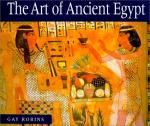|
This section contains 423 words (approx. 2 pages at 300 words per page) |

|
Vizier. The tjaty (vizier or prime minister) was the second most important political figure after the king. According to a text called The Duties of the Vizier, dating to either Dynasty 13 (circa 1759-1630 B.C.E.) or to the reign of Thutmose III (circa 1479-1425 B.C.E.), the vizier met daily with the king to report on affairs of state. He coordinated and supervised the king's business. He probably also served as mayor of the capital city. The office of mayor was perhaps the original source of his power. Beginning in Dynasty 5 (circa 2500-2350 B.C.E.) there may have been two viziers, one for Lower Egypt and another for Upper Egypt.
Overseer of Royal Works. The Overseer of Royal Works was similar to a present-day U.S. Secretary of Labor. He was responsible for organizing labor for agriculture on...
|
This section contains 423 words (approx. 2 pages at 300 words per page) |

|




